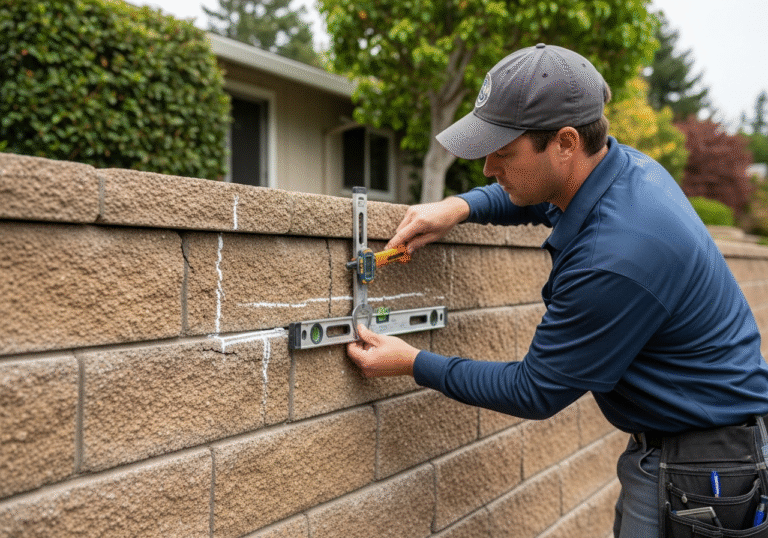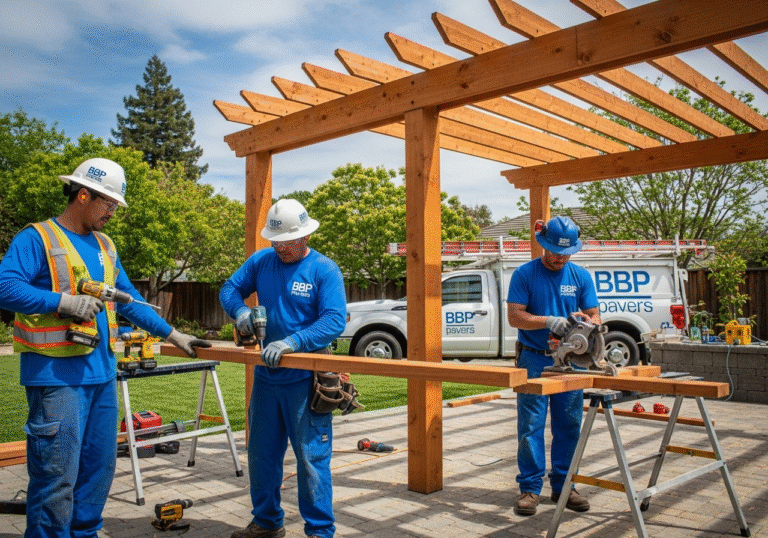How to Landscape Your Backyard: A Step-by-Step Guide

When it comes to creating an inviting outdoor space, landscaping your backyard can make all the difference. A well-designed landscape can enhance the beauty of your home, provide a space for relaxation and entertainment, and even increase your property value. However, the idea of landscaping can be daunting for beginners. Where do you start? What plants should you choose? How do you create a cohesive design?
Fortunately, with a little planning and some basic knowledge, anyone can create a beautiful backyard landscape. First, consider the purpose of your space. Do you want a space for outdoor dining and entertaining? Or perhaps a peaceful retreat for reading and relaxation? Once you have a clear idea of the function of your backyard, you can begin to plan your design. This might include choosing the right plants, hardscaping elements like patios and walkways, and other decorative features like water features or outdoor lighting. With a little creativity and attention to detail, you can create a backyard oasis that you and your family will enjoy for years to come.
Understanding Pavers
Pavers are a popular option for backyard landscaping because they are versatile, durable, and easy to install. They come in a variety of materials, including stone and brick, and can be used to create paths, patios, and other outdoor living spaces.
One of the benefits of using pavers is that they are available in a wide range of colors, shapes, and sizes, which makes it easy to create a customized look for your backyard. They are also low maintenance and can withstand the elements, which means they will last for many years.
When choosing pavers for your backyard, it is important to consider the size and shape of the area you want to cover. For example, if you want to create a path, you may want to choose smaller pavers that can be easily laid out in a straight line. On the other hand, if you want to create a patio, you may want to choose larger pavers that can be arranged in a variety of patterns.
It is also important to consider the type of material you want to use. Stone pavers are a popular option because they are natural and can create a rustic look, while brick pavers are more traditional and can create a classic look. Ultimately, the choice of material will depend on your personal style and the overall look you want to achieve.
Related Posts:
Planning Your Landscape Design
Creating a beautiful and functional backyard landscape design requires careful planning. Before starting any landscaping project, it is essential to consider factors such as the size and shape of the outdoor space, the amount of shade and sunlight it receives, and the desired features such as a pond or patio. By following these backyard landscaping ideas, homeowners can create an outdoor space that is both aesthetically pleasing and practical.
One of the first steps in planning a landscape design is to assess the outdoor space. This includes measuring the dimensions of the yard, identifying areas of shade and sunlight, and taking note of any existing structures such as trees or fences. This information can help homeowners determine the best location for features such as a pond or patio.
Another important consideration is the amount of shade and sunlight the outdoor space receives. This can impact the types of plants and flowers that will thrive in the area, as well as the location of any seating or dining areas. Homeowners may want to consider installing a shade structure such as a pergola or canopy to provide relief from the sun.
When planning a landscape design, it is also important to consider the desired features of the outdoor space. This may include a pond, waterfall, or outdoor kitchen. Homeowners should carefully consider their needs and desires, as well as any budget constraints, when selecting features for their backyard landscaping project.
Related Posts:
Creating Outdoor Spaces
When it comes to landscaping a backyard, creating outdoor spaces is crucial. These spaces can be used for a variety of purposes, such as relaxation, entertaining guests, or enjoying a meal with family. Here are some ideas for creating outdoor spaces:
Seating Area
A seating area is a great way to create a cozy and inviting outdoor space. This can be done with a simple patio set or a more elaborate outdoor sofa and chairs. Adding cushions and pillows can make the space even more comfortable. A fire pit or outdoor fireplace can also be added to create a warm and inviting atmosphere.
Outdoor Room
An outdoor room can be created by adding a pergola or other type of structure. This can provide shade and shelter from the elements, making the space more comfortable and usable. An outdoor rug and curtains can be added to create a more intimate and cozy atmosphere.
Deck
A deck is a great way to create a level surface for outdoor activities. It can be used for dining, entertaining, or simply relaxing. A variety of materials can be used for a deck, including wood, composite, or stone.
Pergola
A pergola is a great way to add vertical interest to a backyard. It can be used to provide shade, support climbing plants, or simply as a decorative element. A variety of materials can be used for a pergola, including wood, vinyl, or metal.
Swimming Pool
A swimming pool is a great way to create a fun and relaxing outdoor space. It can be used for exercise, relaxation, or entertaining guests. A variety of materials can be used for a pool deck, including concrete, pavers, or natural stone.
Outdoor Dining
An outdoor dining area is a great way to enjoy a meal with family and friends. This can be done with a simple table and chairs or a more elaborate outdoor kitchen. Adding lighting can make the space more usable in the evening.
Related Posts:
Working with Plants
When it comes to landscaping a backyard, working with plants is a crucial aspect. Whether you’re looking to add some color with flowers or create a lush lawn, plants are the foundation of any good landscape design.
One important consideration when selecting plants is choosing those that are native to your region. Native plants are well adapted to the local climate and soil, making them easier to maintain and more likely to thrive. They also provide important habitat for local wildlife.
When selecting plants, it’s also important to consider their growth habits. Evergreen shrubs, for example, provide year-round interest and can be used as a backdrop for other plants. Flower beds can be used to create focal points and add color to the landscape. Potted plants are a great option for adding interest to patios and other outdoor living spaces.
In addition to selecting the right plants, it’s important to properly care for them. This includes providing adequate water, fertilization, and pruning as needed. It’s also important to keep an eye out for pests and diseases, and to take action to prevent or treat them as needed.
Overall, working with plants is an essential part of any backyard landscaping project. By selecting the right plants and providing proper care, you can create a beautiful and functional outdoor space that you can enjoy for years to come.
Building Structures
When it comes to landscaping a backyard, building structures can add both functionality and aesthetic appeal. Structures such as walls, buildings, fences, retaining walls, garden sheds, and garden fences can all be incorporated into a backyard landscape design.
Walls and retaining walls can be used to create terraced levels in a sloped backyard or to add visual interest and texture. Building structures like garden sheds can provide storage for tools and equipment, while garden fences can offer privacy and security.
When building structures, it is important to consider the materials used. Wood, brick, stone, and concrete are all popular choices depending on the desired look and functionality. It is also important to ensure that any structures built comply with local building codes and regulations.
Overall, building structures can add a lot of value to a backyard landscape design, both in terms of functionality and aesthetic appeal.
Related Posts:
Water Features
Water features can add a unique and calming element to any backyard landscape. There are several different types of water features to choose from, including ponds, fountains, swimming pools, and waterfalls.
Ponds can be a beautiful addition to any backyard, providing a home for aquatic plants and fish. They can vary in size and shape, and can be designed to fit any style of landscape. Adding a waterfall or fountain to a pond can add movement and sound to the space.
Fountains are a classic choice for water features, and can range from small, simple designs to large, elaborate installations. They can be made from a variety of materials, including stone, concrete, and metal. Fountains can provide a focal point for a backyard, and the sound of running water can create a calming atmosphere.
Swimming pools are a popular choice for backyard water features, providing a place to cool off and relax during the summer months. They can be designed in a variety of shapes and sizes, and can be customized with features like waterfalls and built-in seating.
Waterfalls can add a dramatic element to a backyard landscape, and can be designed to fit any style. They can be made from natural stone or concrete, and can be incorporated into a pond or stand-alone feature. The sound of a waterfall can create a soothing atmosphere and drown out unwanted noise.
When choosing a water feature for a backyard landscape, it is important to consider the size and style of the space, as well as maintenance requirements and budget. A professional landscaper can provide guidance and expertise in designing and installing a water feature that will enhance the beauty and functionality of any backyard.
Gardening Techniques
To create a beautiful and functional backyard landscape, it is important to use effective gardening techniques. Here are some techniques to consider:
Mulching
Mulching is an essential technique for any garden. Mulch helps to conserve moisture, suppress weeds, and regulate soil temperature. Organic mulches, such as shredded leaves or wood chips, can also improve soil structure and provide nutrients as they break down.
Hardscaping
Hardscaping involves using non-living materials, such as stone or concrete, to create functional features in your backyard. This can include walkways, patios, or retaining walls. Hardscaping can provide structure and visual interest to your landscape while also reducing the amount of maintenance required.
Container Gardening
If you have limited space or want to add some greenery to a patio or balcony, container gardening is a great option. Container gardens can be created with a variety of plants, including flowers, herbs, and vegetables. They are also easy to move around and can be changed with the seasons.
Ground Cover
Ground cover plants are low-growing plants that spread to cover the soil. They can help to reduce erosion, suppress weeds, and provide a uniform appearance to your landscape. Some popular ground cover options include creeping thyme, sedum, and vinca.
By using these gardening techniques, you can create a beautiful and functional backyard landscape that is easy to maintain and enjoy.
Dealing with Challenges
Landscaping a backyard can be a challenging task, especially when dealing with specific issues. Here are some common challenges and how to tackle them:
Drainage
Poor drainage can be a significant issue in a backyard, causing waterlogging and soil erosion. It is essential to assess the site’s drainage before starting any landscaping work. One solution is to install a French drain, which involves digging a trench and filling it with gravel and perforated piping. The drain will collect excess water and redirect it away from the yard.
Sloped Backyard
A sloped backyard can be challenging to landscape, but it can also provide an opportunity for creative solutions. One option is to create terraced levels that can be used for planting, seating areas, or retaining walls. Another solution is to build a raised deck or patio, which can provide a flat surface for outdoor activities.
Soil Type
Soil type can also be a challenge when landscaping a backyard. Some plants may not thrive in certain soil types, such as clay or sand. It is essential to test the soil and amend it as necessary before planting. Adding organic matter, such as compost or manure, can improve soil quality and fertility.
Eyesores
Backyards can have eyesores, such as utility boxes, air conditioning units, or trash cans. These can be disguised or hidden with creative landscaping solutions. For example, a trellis or lattice can be used to screen the eyesore, or a raised planter can be built around it, using plants to camouflage it.
In conclusion, landscaping a backyard can be a challenging task, but with the right knowledge and solutions, it can be transformed into a beautiful outdoor space. By addressing specific challenges, such as drainage, a sloped backyard, soil type, and eyesores, homeowners can create a functional and aesthetically pleasing backyard.
Finishing Touches
After completing the main elements of your backyard landscaping project, it’s time to add the finishing touches that will make your space truly unique. Here are a few ideas to consider:
Curtains
Outdoor curtains are a great way to add privacy and style to your backyard. They come in a variety of colors and patterns, and can be hung from a pergola or other outdoor structure. Not only do they block the sun and wind, but they also add a touch of elegance to your outdoor space.
Fire Pit/Fireplace
Adding a fire pit or fireplace to your backyard is a great way to create a cozy gathering spot for friends and family. Whether you prefer a traditional wood-burning fire or a gas-powered flame, there are plenty of options to choose from. A fire pit or fireplace can also serve as a focal point for your backyard design.
Topiary
If you’re looking for a unique way to add some greenery to your backyard, consider adding a topiary. These sculpted plants come in a variety of shapes and sizes, and can be used to create a formal garden or a whimsical outdoor space. Topiaries require regular maintenance, but they’re sure to impress your guests.
In conclusion, adding finishing touches to your backyard landscaping project can take it from ordinary to extraordinary. Whether you choose to add curtains, a fire pit or fireplace, or a topiary, these elements will add style and functionality to your outdoor space.
Maintaining Your Landscape
Once you have created your dream backyard, it’s important to maintain it to keep it looking its best. Here are some tips to help you keep your landscape in top shape.
Low Maintenance
If you’re looking for a low maintenance landscape, consider using native plants that are adapted to your climate. These plants will require less water and fertilizer, and they will be more resistant to pests and diseases. You can also use mulch to help retain moisture in the soil and suppress weeds.
Irrigation
Proper irrigation is essential for maintaining a healthy landscape. Make sure your plants are getting enough water, but be careful not to overwater them. Too much water can lead to root rot and other problems. Consider using a drip irrigation system to deliver water directly to the roots of your plants, which will help conserve water and reduce runoff.
Succulents
Succulents are a great choice for a low maintenance landscape. These plants store water in their leaves and stems, so they can survive in dry conditions. They come in a wide variety of shapes and sizes, and they can add interest and texture to your landscape. Be sure to plant them in well-draining soil and avoid overwatering.
By following these tips, you can keep your landscape looking beautiful and healthy for years to come.
Frequently Asked Questions
What are some DIY backyard landscaping ideas?
DIY backyard landscaping ideas include creating a garden, adding a water feature, building a fire pit, installing outdoor lighting, and using decorative stones or mulch. These projects can be completed on a budget and can add a personal touch to your backyard.
How do I start landscaping my backyard from scratch?
To start landscaping your backyard from scratch, begin by creating a plan. Consider the size and shape of your yard, the existing features, and your budget. Determine what elements you want to include, such as a patio, garden, or water feature. Research plants and materials that will work well in your climate and soil type. Finally, begin implementing your plan and make adjustments as necessary.
What are some large backyard landscaping ideas?
Large backyard landscaping ideas include creating multiple outdoor living spaces, adding a pool or hot tub, building a pergola or gazebo, and incorporating large trees or shrubs. These ideas can help to create a luxurious and relaxing outdoor retreat.
What are some small backyard landscaping ideas?
Small backyard landscaping ideas include creating a vertical garden, using container plants, installing a small water feature, and incorporating a small patio or deck. These ideas can help to maximize the use of space in a small backyard and create a cozy and inviting outdoor area.
How do I landscape a sloped backyard?
To landscape a sloped backyard, consider using retaining walls to create terraced levels. This can help to prevent erosion and provide flat areas for planting or outdoor living spaces. Additionally, consider using plants that are well-suited for sloped areas, such as groundcovers or plants with deep root systems.
How can I improve the overall look of my backyard landscape?
To improve the overall look of your backyard landscape, consider using a variety of plants and materials to add visual interest. Incorporate different textures, colors, and heights to create depth and dimension. Additionally, consider adding outdoor lighting to highlight certain features and create a warm and inviting atmosphere in the evening.






